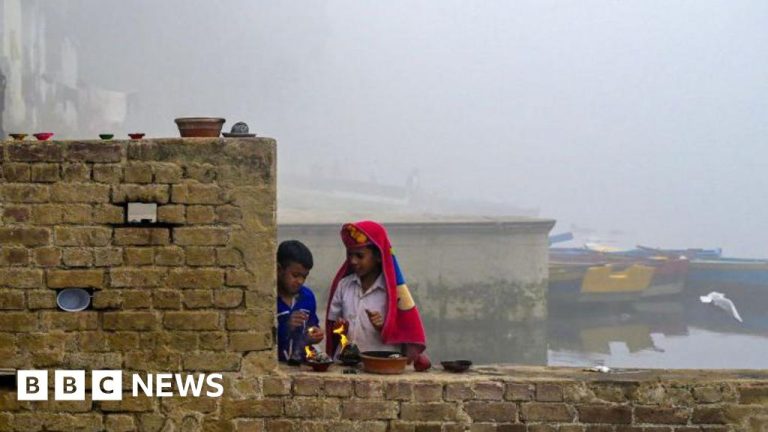Getty Images
All primary schools in Delhi will close due to worsening air pollution, authorities have announced.
In an article on
Delhi and neighboring cities experience levels of pollution considered dangerous for the health of the population. On Thursday, the amount of fine particles in the air was more than 50 times higher than that considered safe by the World Health Organization (WHO).
Delhi and northern states face smog in winter every year due to the confluence of falling temperatures, smoke, dust, low wind speed, vehicle emissions and stubble burning.
According to IQAir, a Switzerland-based air quality index (AQI) monitoring group, Delhi had an average of 254 fine particles – or PM 2.5 – per cubic meter of air on Thursday. The WHO considers no more than 15 people in a 24-hour period safe.
Indeed, fine particles can enter the lungs and affect the organs. It can cause cardiovascular and respiratory diseases, while research shows it can also delay the development of young children.
Levels of larger particles – PM 10 – reached an average of 495, more than 10 times the daily amount considered safe by the WHO.
At the same time, monitoring by IQAir suggests that the neighboring cities of Gurugram and Noida had dangerous air pollution, as did the northern Indian city of Chandigarh.
Residents of Delhi have reported eye irritation and breathing problems, according to local media.
Getty Images
Fine particle pollution reached more than 50 times what is considered safe on Thursday
A study published in The Lancet in July found that 7.2% of daily deaths in the city could be attributed to fine particle pollution.
Air pollution is expected to decrease in the coming days, but will remain at unhealthy levels.
Authorities in Delhi, whose population is estimated at more than 33 million, have already adopted measures to combat pollution, including spraying roads with water containing dust removers.
Non-essential construction was also banned and citizens were asked to avoid burning coal.
But critics say these measures have proven ineffective.
The smog is extensive enough to be visible from space. Recently, NASA shared satellite images showing it stretching across northern India and into Pakistan.
Earlier this month, air pollution in the Pakistani city of Lahore forced authorities to temporarily close its primary schools.

